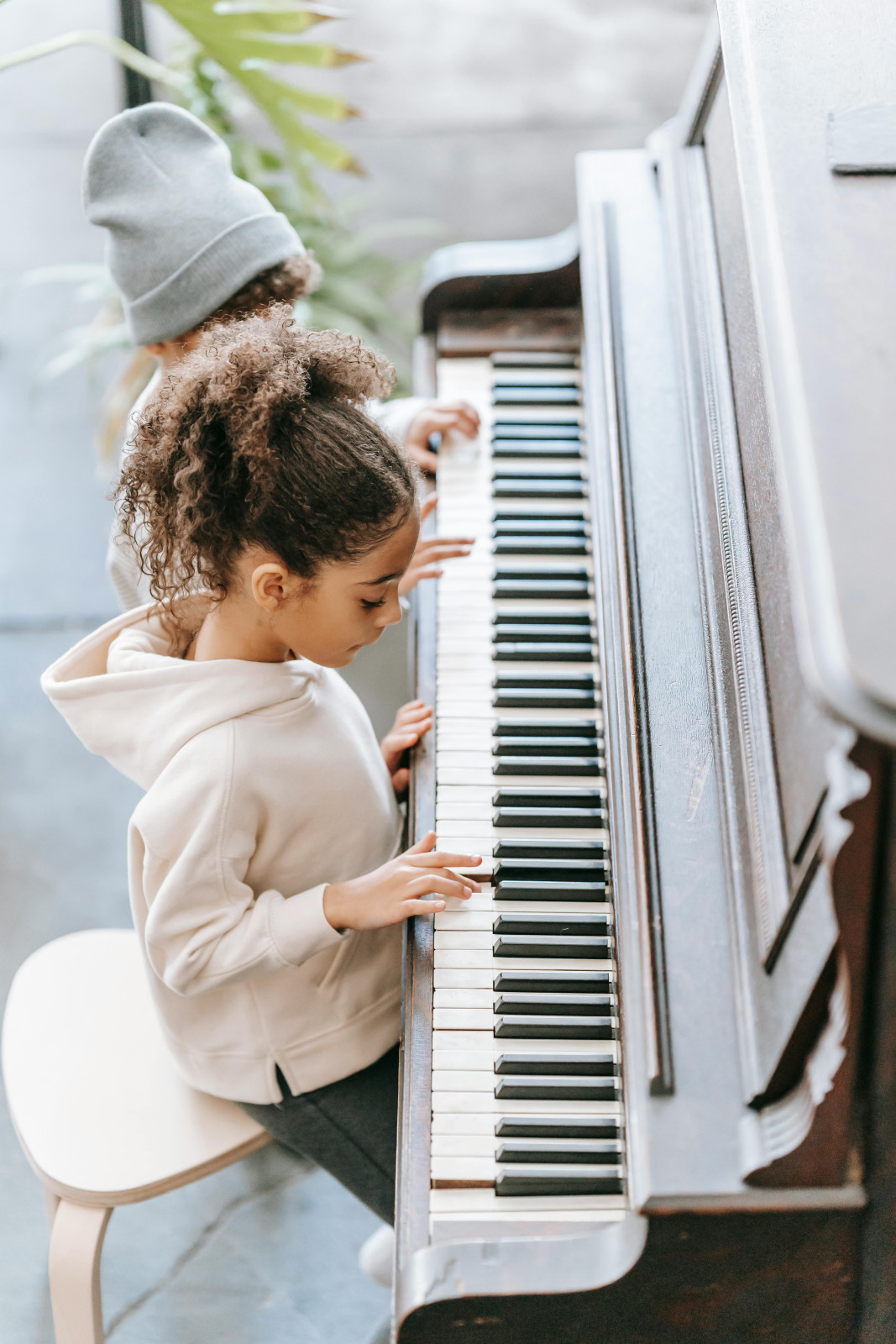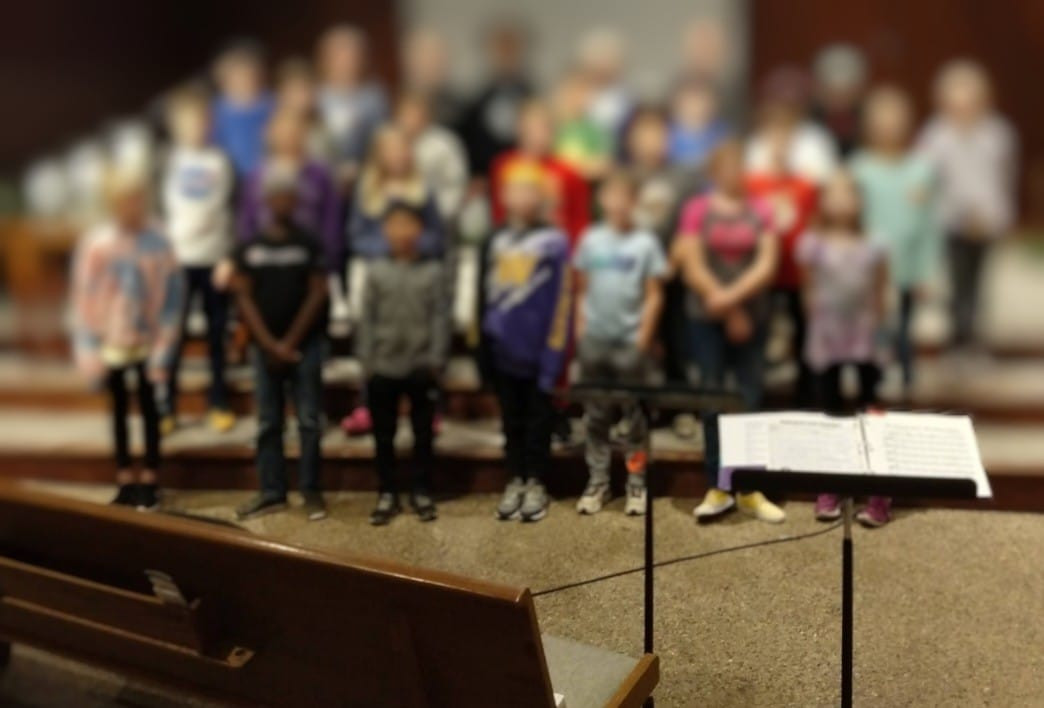

- Cognitive Development: Music's Impact on Learning Music education is integral to classical homeschooling for its role in enhancing cognitive abilities. From improving memory and attention span to sharpening auditory discrimination skills, studying music provides a well-rounded cognitive workout, supporting critical thinking and analytical skills as well as literacy and poetic understanding especially in the early years. Dr. John Feierabend says this is why learning to create music, not just learning about music, is so important especially in ages birth-age 8. Gaining knowledge about music, like memorizing Bach's birth year or mnemonic devices for note names, primarily utilizes one's linguistic intelligence. While this information is certainly useful, it doesn't necessarily lead to a deep understanding of music. True musical intelligence involves the development of neural pathways for musical thinking early in life. This foundational understanding is crucial for later learning to have genuine musical significance. Once our minds establish pathways for understanding, it becomes difficult to alter our perception. Individuals who immerse themselves in music, learning songs and moving artfully to the steady beat, are better positioned to grasp musical notation and instrument playing later. Learning an instrument initially by ear, and then transitioning to reading notation, effectively enhances both skills. On the other hand, those who exclusively learn through notation without prior musical readiness may struggle to develop ear-playing abilities because they learned from a mathematical/linguistic lens first.
- Cultural Literacy: Embracing Musical Traditions Classical homeschooling values cultural literacy and historical understanding. Through exploring a wide variety of musical traditions, students gain insights into different cultures and time periods as well as various life experiences and perspectives. As Charlotte Mason said, "The child should be made familiar with and should be made to appreciate good music." This exposure enriches their educational journey and broadens their horizons.
- Emotional Intelligence: Music as a Tool for Growth Music plays a vital role in developing emotional intelligence within classical homeschooling. By engaging musically, students learn to recognize and manage their emotions. They learn and remember through stories set to music what they may not as easily otherwise. And instrumental music without words has a key role to play as well. As Charlotte Mason believed, "Music is one of the most forcible instruments for refining the feelings." This aspect of education fosters empathy, social-emotional growth, and self-awareness.
- Discipline and Perseverance: Building Habits through Music Learning to play a musical instrument requires discipline and perseverance, values cherished by Charlotte Mason homeschoolers. Through regular practice and overcoming challenges, students develop habits of diligence and self-mastery that extend beyond music into all areas of their lives.
- Creative Expression: Nurturing Individuality through Music In Charlotte Mason classical homeschooling, students are encouraged to express their creativity in learning. Music provides a platform for this expression, allowing students to compose, improvise, and interpret music in unique ways. By embracing their musical instincts, students become active participants in their artistic development.
- Community and Collaboration: Music's Role in Connection Music fosters community and collaboration, whether a child is singing with a group of people, learning turn-taking while playing instruments, or listening as a part of an audience to a collective performance. Students bond over their shared love of music. This sense of camaraderie strengthens relationships and promotes cooperation among peers.
In classical homeschooling, music education plays a pivotal role in enriching the educational experience. From cognitive development to emotional intelligence, music offers practical benefits and meaningful engagement with the world around them both present and past. By integrating music into the curriculum, educators empower students to excel academically and cultivate a lifelong appreciation for the arts. As Charlotte Mason believed, "The musical education of the child should be begun early; that is, the child should have begun to play and sing almost as soon as he can speak." Let us embrace the transformative power of music in classical education, guiding children on a journey of discovery and growth.

- Embrace Your Role as a Guide: Your musical journey with your children begins by understanding that you don't need to be a virtuoso. Think of yourself as a guide, introducing your children to the world of music, helping them explore different genres and exposing them to new songs, providing support and encouragement and showing them you are learning along the way with them.
- Start with the Basics: Begin by laying a solid foundation in music theory, covering essential elements such as rhythm, melody, and harmony. Engage your children with interactive games, fun songs, and hands-on activities to make learning enjoyable and effective. Don't know where to begin with that? Check out the Classical Collective Membership for resources.
- Make Use of Resources: Leverage the wealth of resources available online to support music education at home. From interactive tutorials and educational apps to lessons and community music groups, there's something for every age and skill level. These resources can enrich your children's learning experience and provide valuable support for you as a parent-teacher.
- Encourage Creativity: Nurture your children's creative expression through music by encouraging them to compose their own songs, experiment with different instruments, and even craft homemade musical instruments from household items. Emphasize the joy of exploration and self-expression, fostering a love for music that goes beyond rote learning.
- Lead by Example: Set a positive example for your children by actively engaging with music in your daily life, showing them you are also a lifelong learner! Listen to a variety of musical genres together, sing and dance, read them songtales, attend live performances, and demonstrate that music is something to be enjoyed and celebrated as a family together.
- Be Patient and Persistent: Above all, remember that learning music is a journey that requires patience and persistence. Celebrate your children's progress, no matter how small, and encourage them to persevere through challenges. By fostering a supportive and nurturing environment, you can inspire a lifelong passion for music in your children.
Teaching music at home can be a rewarding experience for both you and your children, regardless of your musical background. By embracing your role as a guide, starting with the basics, utilizing resources, encouraging creativity, leading by example, and maintaining patience and persistence, you can instill a lifelong love of music in your children and grow your own skill and confidence along the way. So, don't hesitate to start this musical adventure together and discover the joy of making music at home!


The Rise of Alternative Education Models:
- Flexibility in Curriculum: Recognize the diverse needs and schedules of homeschooled, online, and hybrid students. Consider developing flexible music education curricula that can be tailored to individual learning styles and time constraints. This has been a key area of research, growth, and implementation for me over the past 5 years.
- Utilizing Technology: Embrace technology to connect with students in virtual spaces. Offering virtual ensemble experiences and collaborative projects allows students to engage with music from their own time and space constraints.
- Community Involvement: Foster a sense of community among students through online forums, virtual performances, and in-person collaborative events. This not only enhances the social aspect of music education but also provides a platform for students to showcase their talents, allowing them to thrive in a way that their alternative educational opportunities may not afford in other subject areas.
- Adaptive Teaching Methods: Recognize that alternative education students may have varied learning styles and preferences. Explore different teaching methods, incorporating visual aids, interactive activities, and project-based learning to keep students engaged.
- Supporting Parents as Educators: Acknowledge the role of parents in alternative education settings and provide resources to support their efforts. Consider workshops, online resources, and guides that empower parents to facilitate their child's musical journey. This is also a big area for growth in the near future!
Bridging the Economic Gap: Address affordability concerns. Make music education accessible by offering cost-effective options, group lessons, or community-based programs. Ensure that financial constraints don't limit a student's access to the world of music. This has been an effort of mine over recent years too, with great success!
What ways have you changed and evolved what you do to meet this educational shift?

- Note Recognition: The ability to identify and sing the correct pitches indicated in the musical score.
- Rhythm Recognition: Being able to interpret and execute the rhythm of a piece accurately.
- Interval Recognition: Recognizing the distance between two pitches, which helps in accurately reproducing melodies.
- Key and Scale Recognition: Understanding the key signature and scale of a piece, which guides the performer on which notes to sing.
- Phrasing and Articulation: Interpreting the musical notation to convey musical expression, including dynamics, tempo, and articulation.
Ear training, also known as aural skills, involves developing the ability to identify and reproduce musical elements solely by hearing them. This includes melody, harmony, rhythm, and timbre. My goal is always to develop the musical ear before the musical eye.
- Pitch Recognition: Identifying individual pitches and intervals between them.
- Melodic Dictation: Hearing a melody and writing it down in musical notation.
- Harmonic Analysis: Recognizing and identifying chords and chord progressions in a musical piece.
- Rhythmic Dictation: Hearing a rhythm and notating it accurately.
- Chord Progression Recognition: Identifying the sequence of chords in a piece of music.
- Transcription: Listening to a piece of music and notating it in sheet music form.
Conversational Solfege is a system of 12 steps that addresses these needs first by ear and then adding the eye and symbols to it to develop a person's musical mind and musical thinking in a playful, creative way!
To learn more about Conversational Solfege, check it out here. And here are the flash cards I use that go with the CS units. I'm happy to chat more about CS as well, it's a passion of mine to use this well-created resource to help develop young musicians.










